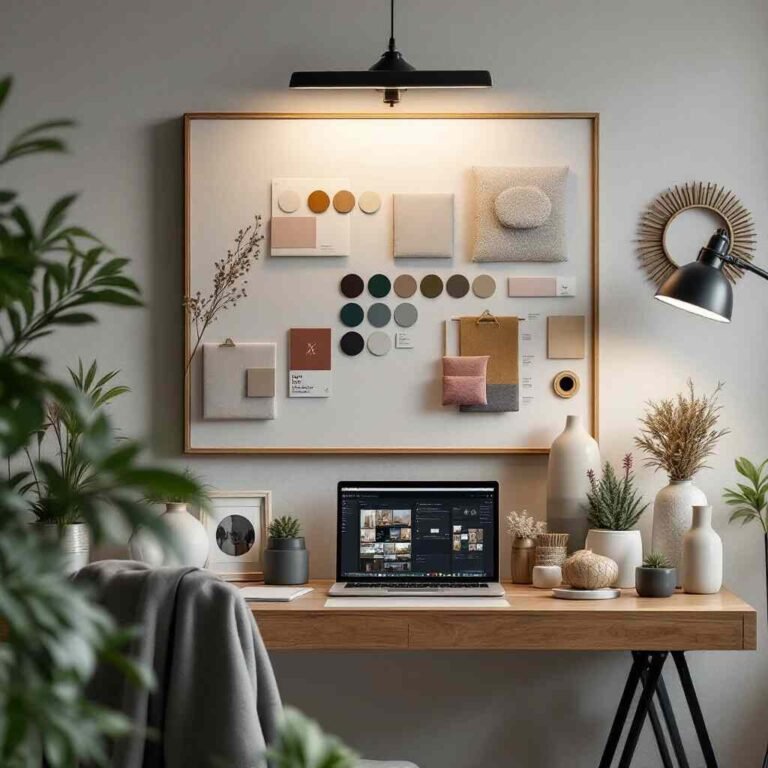The home decor market is booming, increasing demand for unique, personalized designs that reflect individuality and style. Whether you’re a creative entrepreneur, a design enthusiast, or simply someone with an eye for aesthetics, starting your home decor line can be rewarding and profitable. But where do you begin?
The home decor industry is thriving like never before. People spending more time at home are constantly looking for ways to enhance their surroundings with unique, stylish, and functional decor pieces. This growing demand presents an excellent opportunity for entrepreneurs to create and sell home decor lines.
Understanding the Home Decor Market
To succeed in the home decor industry, you must first understand the market you’re entering. Let’s dive into two critical aspects: market trends and target audience analysis.
Market Trends and Opportunities
1. Current Trends in Home Decor
The home decor industry is constantly evolving, with trends changing year after year. Here are some of the biggest trends currently shaping the market:
- Sustainability: Eco-friendly and sustainable products are in high demand as consumers become more conscious of their environmental impact.
- Personalization: People seek decor that tells their story, such as custom-made wall art, bespoke furniture, or monogrammed accessories.
- Global Influences: Different cultures, such as Moroccan rugs, Japanese minimalism, or Scandinavian design, inspire a growing interest in decor.
Opportunities for New Entrants
The home decor market is vast, with room for new ideas and fresh perspectives. Niche markets, like eco-friendly designs or handmade artisan pieces, are especially ripe with opportunity. If you can identify an underserved audience or a unique product idea, now is the perfect time to make your mark.
Target Audience Analysis
Understanding your ideal customer is crucial to designing and marketing the right products effectively.
Who Are Your Customers?
Your target audience could include:
- Young professionals furnishing their first apartment.
- Homeowners looking to refresh their interiors.
- Eco-conscious consumers seeking sustainable decor.
Tools to Understand Customer Preferences
- Google Trends: Discover what people search for in the home decor niche.
- Social Media: Platforms like Instagram and Pinterest are treasure troves of insights into trending styles and consumer preferences.
- Surveys and Focus Groups: Direct feedback from potential customers can help refine your product ideas.
What Makes a Home Decor Line Unique?
In a saturated market, having a clear Unique Selling Proposition (USP) can set you apart from competitors.
You may also read (income of home decor)
Defining Your Unique Selling Proposition (USP)
Your USP is what makes your brand special. It could be your use of sustainable materials, a distinctive design aesthetic, or a focus on affordable luxury.
Examples of Successful Home Decor Brands:
- The Citizenry: Known for ethically sourced, artisan-made decor.
- West Elm: Combines modern designs with sustainability.
- Anthropologie Home: Offers eclectic, bohemian-inspired pieces.
Niche Selection
Choosing the right niche is essential to finding your place in the market.
- Popular Niches: Boho decor, minimalist designs, eco-friendly products, vintage-inspired pieces.
- How to Find Your Niche: Look for gaps in the market or areas where consumer demand exceeds supply. For example, are there enough affordable, high-quality handmade decor items available?
Where to Find Unique Home Decor Lines (Inspiration & Sourcing)
Finding the right products and inspiration is key to starting a successful home decor line. Here are four ways to source ideas and products:
Online Marketplaces and Boutiques
Platforms like Etsy and Society6 are great for discovering unique and handcrafted items. Look for independent sellers whose designs align with your vision, and consider collaborating with them to create exclusive pieces.
Local Artisans and Craft Fairs
Handmade decor carries a personal touch that resonates with many consumers. Visit local craft fairs, pop-up markets, and artisan workshops to find one-of-a-kind items. Building relationships with local artisans can also lead to exclusive partnerships.
International and Cultural Influences
Sourcing globally can add a touch of authenticity and cultural richness to your line. For example:
- Moroccan tiles for colorful wall decor.
- Indian fabrics for cushion covers.
- Scandinavian woodwork for minimalist furniture.
Tip: Ensure ethical sourcing practices by working with verified suppliers and adhering to fair trade principles.
Trade Shows and Industry Events
Attending trade shows is an excellent way to discover emerging trends and connect with designers. Some notable events include:
- High Point Market (USA)
- Maison & Objet (France)
- Salone del Mobile (Italy)
How to Start a Home Decor Line: Step-by-Step Guide
Let’s break down the process of starting your home decor business into actionable steps:
Conduct Thorough Market Research
Use tools like Statista and Google Trends to analyze market demand and validate your product ideas. Study your competitors to see what’s working and identify areas for improvement.
Develop a Solid Business Plan
Your business plan should outline:
- Goals and objectives.
- Target audience and marketing strategies.
- Financial projections and funding requirements.
Build Your Brand
Create a memorable brand identity, including a logo, brand colors, and a compelling story communicating your values.
Product Development and Sourcing
- Design your first collection, keeping your niche and audience in mind.
- Partner with artisans or manufacturers to bring your designs to life.
Set Up Your Online Store
Choose an e-commerce platform like Shopify or WooCommerce. Ensure your website is visually appealing, mobile-friendly, and easy to navigate.
Pricing Strategy
Price your products based on production costs, competitor pricing, and perceived value.
Marketing Your Home Decor Line
Marketing is key to building brand awareness and driving sales.
Building Your Brand Online
- Use Instagram, Pinterest, and TikTok for visual storytelling.
- Create blog posts, lookbooks, and DIY guides to engage your audience.
Influencer and Affiliate Partnerships
Partner with influencers who align with your brand to reach a larger audience. Set up an affiliate program to incentivize others to promote your products.
Scaling Your Home Decor Business
Once your business is up and running, consider these strategies to grow:
Expanding Product Lines
Introduce new collections or limited-edition pieces to keep your offerings fresh and exciting.
Wholesale and Retail Partnerships
Pitch your products to boutiques and larger retailers. Prepare a professional catalog and pricing sheet to make a strong impression.
International Expansion
Explore selling in overseas markets. Adjust your products and marketing strategies to align with local preferences.
Common Challenges and How to Overcome Them
Starting a home decor line comes with challenges, such as:
- Competition: Focus on differentiation and building a loyal customer base.
- Inventory Management: Use tools like TradeGecko or QuickBooks to manage stock levels efficiently.
- Customer Feedback: Treat negative feedback as an opportunity to improve your products and services.
You may also read (house is decorated with five things)
